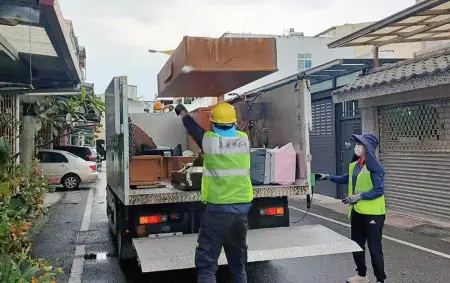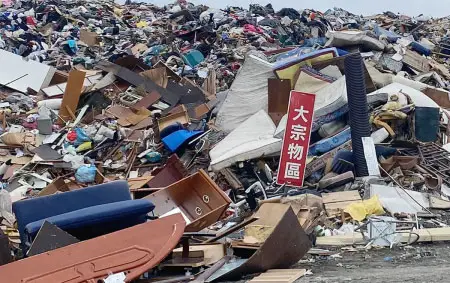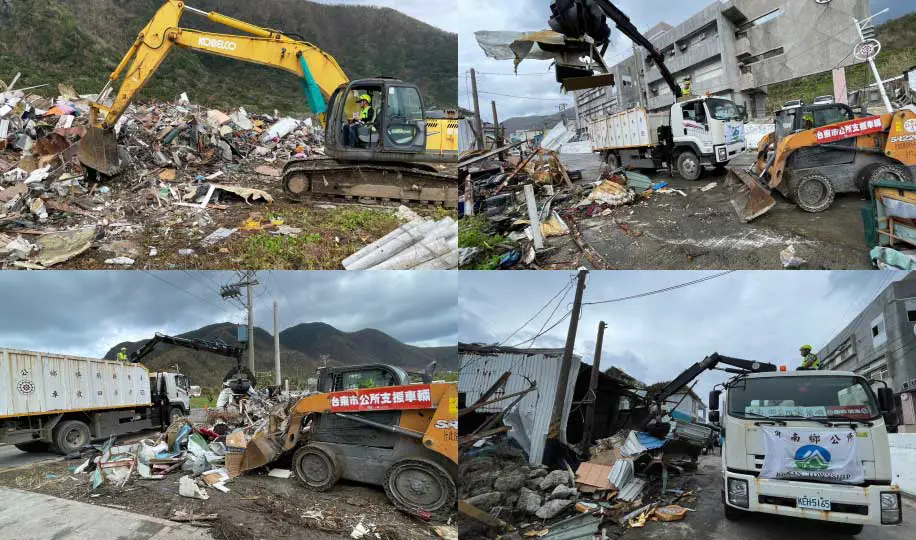 Post-Disaster Environmental Cleanup
Post-Disaster Environmental Cleanup
In the face of environmental damage caused by natural disasters, urgent response and recovery efforts are top priority. In recent years, with the impact of climate change, the frequency and severity of environmental disasters have been increasing, making it necessary for us to be more proactive in planning, promoting, coordinating, implementing, and supervising related measures to effectively manage situations, promptly support responses to disaster-stricken areas and environmental restoration efforts, thereby enhancing disaster response effectiveness.
Guidelines for Public Disposal of Disaster Waste- Citizens are requested to separate perishable and foul-smelling garbage from other waste, allowing local environmental authorities to plan and prioritize the removal of perishable waste.
- Non-perishable waste, such as discarded appliances or large furniture, should be placed at temporary storage locations designated by environmental authorities to avoid obstructing disaster relief efforts and traffic flow.
- Accelerate the removal of garbage from residential areas and marketplaces and set up appropriate depots for transfers, first using small loaders and vehicles to collect the waste, then using excavators or large trucks for transfers.
- To increase removal efficiency, local environmental units should find appropriate locations nearby to set up transfer stations. With short-range collections conducted during the day and long-distance transport at night, waste and sludge removed from homes and placed on streets should be loaded by machinery onto small trucks, removed from streets, stored temporarily at transfer stations during the day and disinfected accordingly, and then transported at night to landfills or incinerators by large trucks. This approach avoids daytime traffic congestion and significantly speeds up removals, helping restore street cleanliness faster.


Results of subsidies provided to local governments for waste disposal and environmental facility restoration after force majeure disasters over the years
Results in 2023- In August 2023, subsidy provided to Taitung County Environmental Protection Bureau for the post-Typhoon Doksuri environmental cleanup and disinfection plan (NT$968,100 subsidy)
- In August 2023, subsidy provided to Nantou County Environmental Protection Bureau for post-Typhoon Khanun environmental cleanup and disinfection operations (NT$2 million subsidy)
- In September 2023, subsidy provided to Taitung County Environmental Protection Bureau for the post-Typhoon Haikui environmental cleanup and disinfection plan (NT$5,969,500 subsidy)
- In October 2023, subsidy provided to Taitung County Environmental Protection Bureau for the post-Typhoon Koinu environmental cleanup and disinfection plan (NT$1 million subsidy)

- In April 2024, subsidy provided to Hualien County Environmental Protection Bureau for the 0403 Earthquake environmental cleanup and disinfection plan (NT$1,633,856 subsidy) and the post-0403 Earthquake environmental cleanup plan (NT$3.6 million subsidy)
- Subsidized the "Hualien County April 3 Earthquake Post-Disaster Environmental Cleanup Implementation Plan (Second Site for Temporary Construction Waste Storage)" (Subsidy: NT$2,925,000)
- Subsidized Hualien County's "Typhoon Gaemi Environmental Cleanup and Disinfection Implementation Plan" (Subsidy: NT$1,548,700)
- Subsidized Kaohsiung City's 2024 "Typhoon Gaemi Post-Disaster Environmental Cleanup Plan" (Subsidy: NT$8,029,370)
- Subsidized Tainan City's "Revised Plan for Post-Typhoon Recovery Cleaning Manpower and Equipment Rental" (Subsidy: NT$8,991,905)
- Subsidized Pingtung County's 2024 "Typhoon Krathon Post-Disaster Environmental Cleanup Plan" (Subsidy: NT$1,855,770)
- Subsidized Taitung County's 2024 "Typhoon Krathon Post-Disaster Environmental Cleanup Plan" (Subsidy: NT$1,445,090)
- Subsidized Kaohsiung City's 2024 "Typhoon Krathon Post-Disaster Environmental Cleanup Plan" (Subsidy: NT$17,575,000)
- Subsidized Taitung County's 2024 "Typhoon Kong-rey Post-Disaster Environmental Cleanup Plan" (Subsidy: NT$7,896,800)
- Subsidized Hualien County's "Typhoon Kong-rey Environmental Cleanup and Disinfection Implementation Plan" (Subsidy: NT$1,904,985)
Through years of effort, we have achieved considerable results in post-disaster environmental cleanup and reconstruction. Subsidies have been provided over the years to assist local governments in dealing with disasters triggered by force majeure, removing waste and restoring environmental facilities, allowing affected communities to return to normal swiftly. However, as we face the potential of more environmental disasters in the future, the administration will continue to work toward improving response measures and recovery strategies to ensure our environment becomes more resilient and sustainable.
- Data Source: Division of Environmental Sanitation
- Publish Date: 2024-08-27
- Update Date: 2025-10-30

 Related Topics
Related Topics






